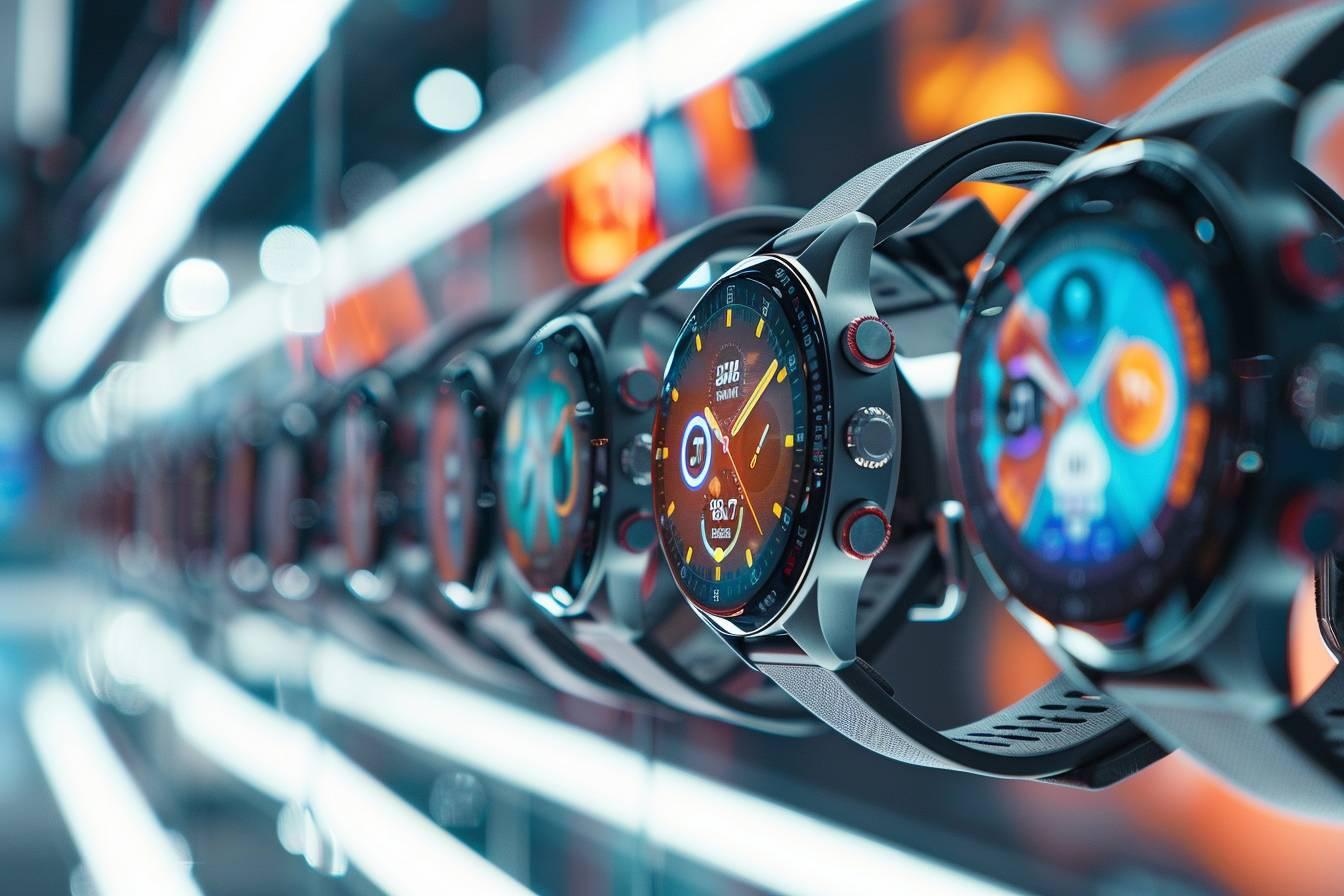Connected watches have revolutionized the way we interact with technology on a daily basis. These little high-tech gems offer a multitude of functions that go far beyond simply telling the time. Let’s take a look at the advantages and challenges of these smartwatches, which continue to grow in popularity.
The many facets of modern smartwatches
Today’s smartwatches are veritable concentrates of technology. They offer an impressive range of functions that go far beyond simple timekeeping:
- Physical activity tracking
- Health monitoring
- Notification management
- Contactless payment
- GPS navigation
Health monitoring has become a major selling point for these devices. Integrated sensors can measure heart rate, analyze sleep quality and even detect certain cardiac anomalies. This wearable technology contributes to a greater awareness of our general well-being.
In terms of productivity, smartwatches excel. They allow you to quickly check your messages, manage your calendar or answer calls directly from your wrist. This discreet interface means you can stay connected without being constantly hooked on your smartphone.
The autonomy of these watches has improved considerably, but remains a challenge for manufacturers. Battery life generally varies between 1 and 7 days, depending on model and usage. Here’s an overview of average autonomies:
| Type of use | Average autonomy |
|---|---|
| Intensive use | 1-2 days |
| Moderate use | 3-5 days |
| Energy-saving mode | 5-7 days |
The evolution of smartwatches: from gadget to indispensable companion
The history of connected watches is relatively recent, but their evolution has been meteoric. Initially perceived as mere gadgets, they have become for many an indispensable everyday accessory.
One of the major advances has been the integration ofeSIM. This technology enables smartwatches to operate autonomously, without the need for a permanent connection to a smartphone. As a result, it is now possible to :
- Make and receive calls
- Send and receive SMS messages
- Use online applications
- Stream music
This increased independence opens up new perspectives, especially for sports enthusiasts who can leave their phone at home during their training sessions.
Operating systems for smartwatches have also diversified. While Wear OS (Google) and watchOS (Apple) dominate the market, other players are offering interesting alternatives. This competition stimulates innovation and drives manufacturers to constantly improve their products.

Smartwatch challenges and issues
Despite their many advantages, smartwatches also raise important questions. Data confidentiality is a key concern. These devices collect an impressive amount of personal information, from our sleeping habits to our daily movements.
The security of this data is crucial. Manufacturers must put in place robust measures to protect users against hacking and misuse of their personal information. This responsibility is all the more important as these watches may contain sensitive data on our health.
Theenvironmental impact of smartwatches is also a subject of debate. The production of these devices requires the extraction of rare materials, and their programmed obsolescence contributes to the increase in electronic waste. Efforts are needed to make these products more sustainable and recyclable.
Here are a few ways to reduce the ecological footprint of your connected watch:
- Opt for models made from recycled materials
- Choose brands committed to eco-responsibility
- Use your smartwatch for as long as possible
- Recycle your old model properly
Future prospects for connected watches
The smartwatch market is booming, and innovations continue to multiply. Manufacturers are exploring new niches, such as connected watches for children, equipped with secure geolocation and communication functionalities to reassure parents.
In the military sector, smartwatches are also finding their place. They offer crucial coordination and communication capabilities in the field. This specific use has prompted designers to develop ultra-resistant and secure models.
The integration of artificial intelligence into smartwatches promises significant advances. We can imagine personal assistants capable of anticipating our needs, optimizing our health or even detecting certain pathologies at an early stage.
Price remains a determining factor in the choice of a smartwatch. At present, the price range generally extends from €50 to €150 for mass-market models. This affordability contributes to the democratization of these devices, and augurs even wider adoption in the years to come.
Ultimately, connected watches have established themselves as much more than just a fashion accessory. They represent a veritable technological revolution on the wrist, offering a bridge between our physical and digital worlds. Their ongoing evolution promises exciting innovations, while raising essential questions about our relationship with technology and our environmental responsibility.


